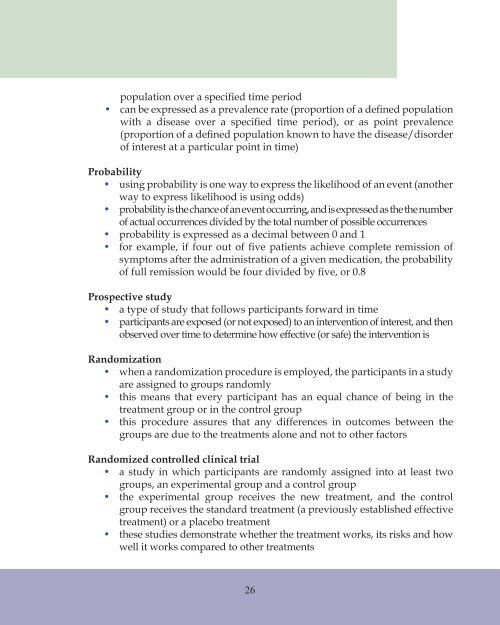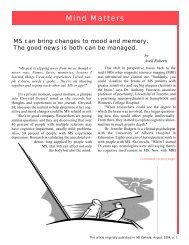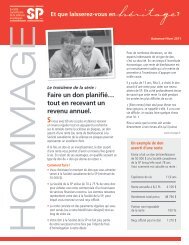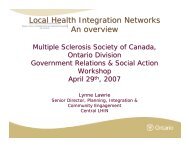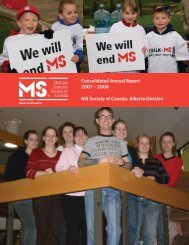Evidence-based medicine (EBM)
Evidence-based medicine (EBM)
Evidence-based medicine (EBM)
You also want an ePaper? Increase the reach of your titles
YUMPU automatically turns print PDFs into web optimized ePapers that Google loves.
population over a specifi ed time period<br />
• can be expressed as a prevalence rate (proportion of a defi ned population<br />
with a disease over a specifi ed time period), or as point prevalence<br />
(proportion of a defi ned population known to have the disease/disorder<br />
of interest at a particular point in time)<br />
Probability<br />
• using probability is one way to express the likelihood of an event (another<br />
way to express likelihood is using odds)<br />
• probability is the chance of an event occurring, and is expressed as the the number<br />
of actual occurrences divided by the total number of possible occurrences<br />
• probability is expressed as a decimal between 0 and 1<br />
• for example, if four out of fi ve patients achieve complete remission of<br />
symptoms after the administration of a given medication, the probability<br />
of full remission would be four divided by fi ve, or 0.8<br />
Prospective study<br />
• a type of study that follows participants forward in time<br />
• participants are exposed (or not exposed) to an intervention of interest, and then<br />
observed over time to determine how effective (or safe) the intervention is<br />
Randomization<br />
• when a randomization procedure is employed, the participants in a study<br />
are assigned to groups randomly<br />
• this means that every participant has an equal chance of being in the<br />
treatment group or in the control group<br />
• this procedure assures that any differences in outcomes between the<br />
groups are due to the treatments alone and not to other factors<br />
Randomized controlled clinical trial<br />
• a study in which participants are randomly assigned into at least two<br />
groups, an experimental group and a control group<br />
• the experimental group receives the new treatment, and the control<br />
group receives the standard treatment (a previously established effective<br />
treatment) or a placebo treatment<br />
• these studies demonstrate whether the treatment works, its risks and how<br />
well it works compared to other treatments<br />
26


